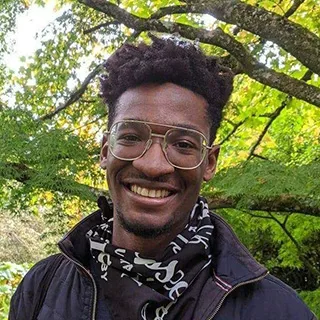Importance of engineers creating sustainable innovations
Published: Tue 22 Mar 2022
Published: Tue 22 Mar 2022
Following his victory in the #PresentIn10 final, Member News caught up with Paul to discuss his winning presentation, the importance of engineers creating sustainable innovations, why he loves kites – and why we should too!
I started my graduate job over lockdown. Because of this I worked from home and found myself with a lot freer time than I expected.
I used this as an opportunity to work on self-development and gain more awareness of the professional institutes that support engineers.
I saw the competition posted on the IET twitter page and realised that from my master’s university project I had the perfect topic to present on.

My presentation was titled “Airborne Wind Energy: Why I love kites and you should too”. The concept uses kites as an alternative to traditional wind turbines.
In the most basic form, a kite flies up, power is transmitted via a tether to a generator on the ground, the kite control surface is then manipulated to fall towards the ground. This process is repeated to generate power.
Compared to a conventional wind turbine, this technology has a cheaper capital cost, can be used in more locations and rapidly set-up, and can be scaled up to greater heights and sizes that material strength limits wind turbines too, thusly capturing greater winds and generating more power.
This concept has its own technical challenges and has existed as an idea since the 1980s. Today there are several companies backed by some major players who are researching and now in the later development to make this concept a reality.
At university in my master’s group project, we made our own mark on this concept by developing a working prototype to power a lightbulb.
It’s a great opportunity. For me, I was able to work on and refine my virtual presentation skills between each round – a skill that proves to be incredibly useful in modern smarter working.
I also really enjoyed the other participants presentations; I was exposed to a variety of impactful engineering concepts and interesting ways to present an idea virtually. I found it really humbling to be so impressed by the calibre of presenters in every round.
I learnt so much from being in this competition and it’s the first time that I’ve competed on a global level. Since winning, I was invited to the IET Presidential address back in October, which gave me some chances to network and meet a lot of the community. I was also invited to speak on a podcast episode.
Present on something you’re passionate about! When presenting it’s easy to tell if someone is genuine, and if you talk about something you love it will really shine through.
Engineers are problem solvers, and for one of the biggest problems affecting society, I’m sure that engineers will be at the centre. I think engineers will continue to improve upon past ideas with innovation, seeing them in a way that is cost-effective, safe, reliable, and most importantly sustainable.
The reason I became an engineer was because of the love to create and solve problems to society’s greatest challenges; being an engineer means having the opportunity to create large-scale impacts and enact change.